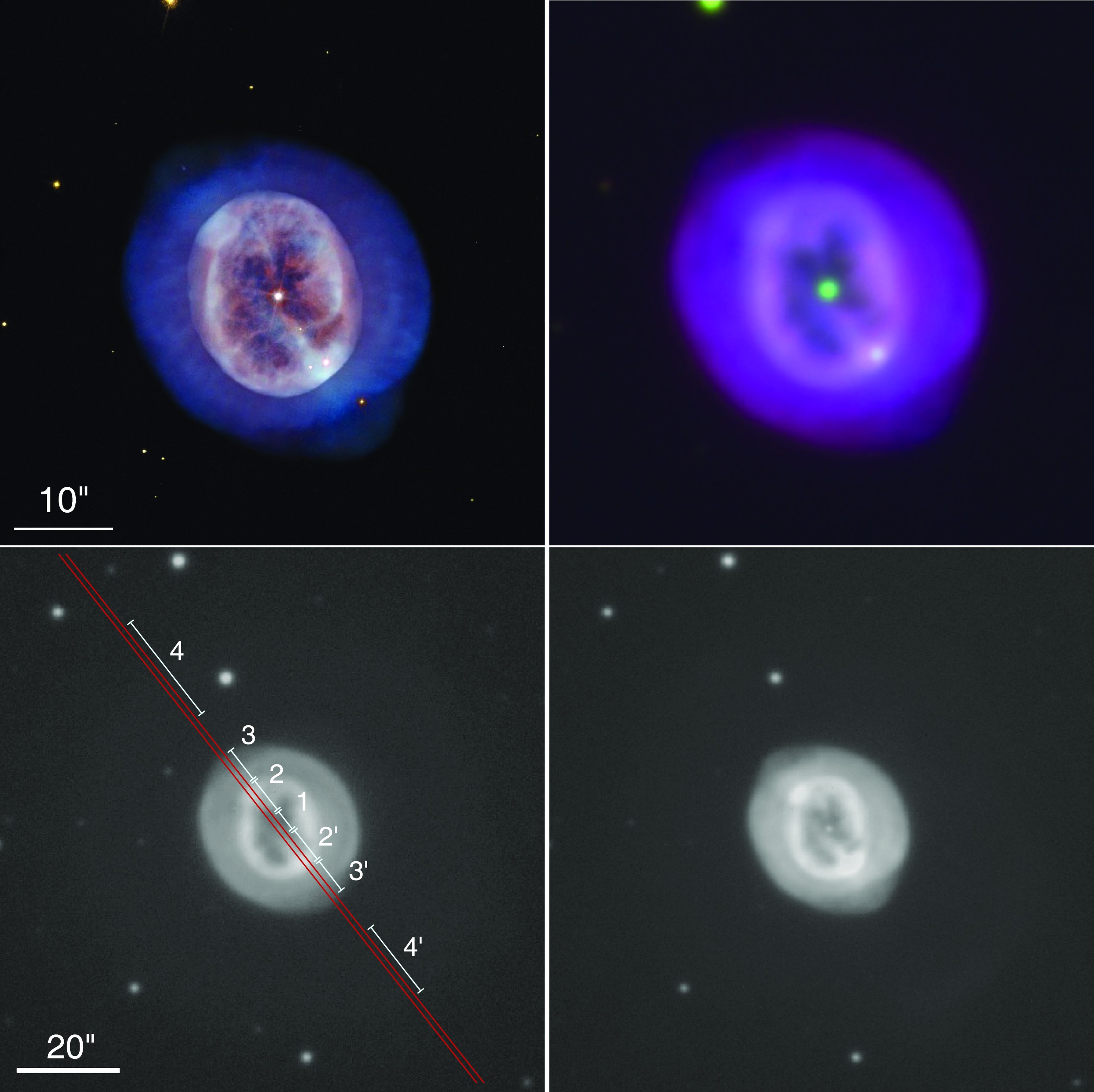NGC 2022, a case study of a multiple-shell planetary nebula
Abstract
We present a detailed study of the physical properties, history of mass loss, and chemical abundances of the planetary nebula NGC 2022. New imaging observations obtained with the OAJ/JAST80 and NOT/ALFOSC confirm the presence of a faint ~88 arcsec halo surrounding a double-layered elliptical structure that consists of a bright 21.4 × 16.7 arcsec inner shell and a 32 arcsec diameter envelope. The long-slit high-dispersion echelle observations obtained with MES on the OAN-SPM 2.1-m telescope can be well described by a SHAPE model with expansion velocities of 43 ± 3 and 34 ± 3 km s-1 along the major and minor axes of the elliptical inner shell, respectively. In addition, a deep long-slit high-dispersion echelle observation made with the KPNO 4-m telescope detected line-splitting in the faint halo, revealing an expansion velocity of 15.5 ± 2 km s-1. We have also used new intermediate-dispersion optical spectra with the NOT, complemented with IUE data, to study the chemical abundances of each shell. The abundances of the three shells are typical of a Type II in the Peimbert classification of PNe and do not exhibit any notable anomalies. Finally, we estimate the total mass of NGC 2022 to be ≈0.9 M⊙, which consists of 0.64 M⊙ from the CSPN and 0.1, 0.11, and 0.1 × $f_{\mathrm{halo}}^{1/2}$ M⊙ from the ionized inner shell, outer shell, and halo, respectively.
- Publication:
-
Monthly Notices of the Royal Astronomical Society
- Pub Date:
- September 2023
- DOI:
- 10.1093/mnras/stad1915
- Bibcode:
- 2023MNRAS.524.1601M
- Keywords:
-
- stars: evolution;
- (ISM:) planetary nebulae: general;
- (ISM:) planetary nebulae: individual: (NGC 2022)
